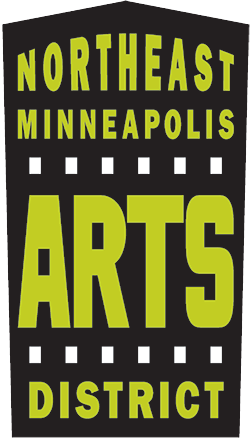“But as we get older and return to dust, what will we drink?” -Bereket Adamu
Listening in at the artist talk of the Adera, Lije; Adera Lijen exhibition, which was on view in the Public Functionary Main Gallery from July 27-August 17, one could hear powerfully intimate questions from curator Makeda Tadesse (a 2023-24 fellow of the Emerging Curators Institute) and windows into the artistic journeys of visual artist Nafyar and ceramicist Addisalem Alemu.
There was laughter between the artists and a sense of knowing understanding as they pointed out places of shared experience. From sometimes painful times in youth, where individuals might seek approval from external sources, to the here and now, where a type of homecoming to the self allows for the artists to acknowledge their own places as part of multiple cultures. This notion of a “return” to one’s self after a period of cultural distance or resentment was well synthesized by Alemu’s statement, “With age, I have started to realize that me, as myself, is my culture…There was so much of my younger life where I was so concerned about other people validating how I engaged with my culture.”
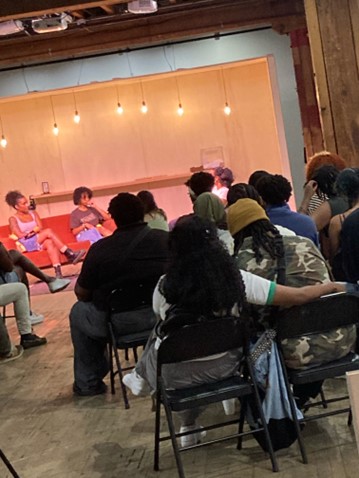
Both artists spoke to the ways that a radical self acceptance seemed to settle in with aging and alter the course of how each they came to understand themselves and their place at different identity intersections. Nafyar gave voice to this idea while also acknowledging that there can be healing in the very attempt of balance. In not just putting oneself in simplified boxes of multiple cultural identities: “Existing on the margins of your own community, that’s already on the margins, is a very strange place to be…trying to balance those two identities, or whatever multiplicity you are, within you, is affirming enough.”
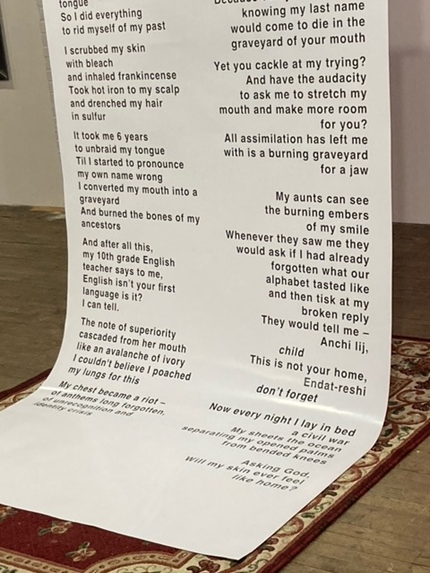
The Light is on the Land
The idea of coming physically and emotionally to a place of understanding, is a concept that artist Jennifer Nevitt also showcases. Her work is in the current exhibition at the NE Sculpture Gallery Factory, titled The Light is on the Land. Inspired in part by a walk in the grasslands of Minnesota, the space itself is organized in a way where the orientation and spatial perspective of the viewer impacts what is see-able and seen. There are standing wooden structures with hanging gossamer thin metal pieces that move with the draft of whomever walks near. There is a painting by Nevitt and fellow artist Galilee Peaches, that is hidden or revealed depending on where the viewer is in the room.
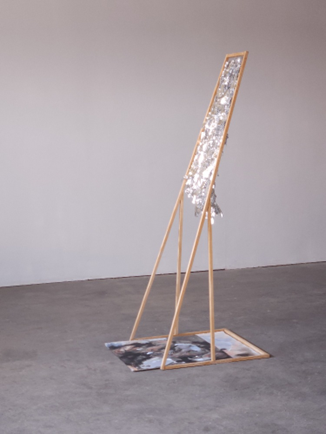
In this way, the single room of the NE Sculpture Gallery | Factory, during the exhibit on view through September 14, becomes a path. A road to meander that changes as the viewer goes forward through it. It is a way for the visitor to be present not just in the space but in their bodies. However you move through the room, the movement itself creates and changes the experience. Nevitt was very intentional about creating a space that returns agency to everyone in it, while highlighting the layered and collaborative paintings, sketches, repetitions and structures within the pieces themselves. When speaking on her own journey from a challenging place to a place of possibility she shared, with an optimism that can only be experienced through hardship: “There really is another place, you just can’t see it. If you start walking towards it, you will get there.”
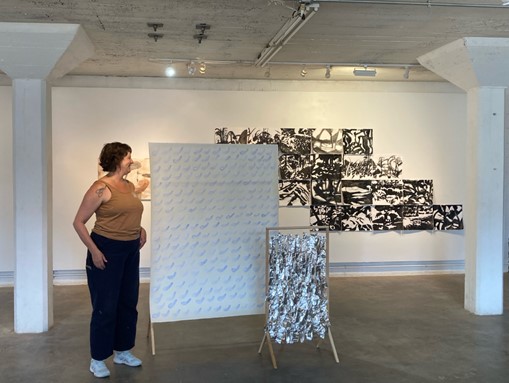
Analysis and Photos by Mary Barghout
